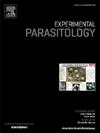Exploring global trends in human toxoplasmosis seroprevalence by meta-analysis
IF 1.4
4区 医学
Q3 PARASITOLOGY
引用次数: 0
Abstract
Understanding the global prevalence of infectious diseases is essential for effective public health strategies and resource allocation. Among foodborne diseases, toxoplasmosis—caused by Toxoplasma gondii—poses significant health risks, particularly for pregnant women and immunocompromised individuals. This study presents one of the most comprehensive systematic reviews and meta-analyses to date, synthesizing global seroprevalence estimates of human toxoplasmosis from 320 studies, covering 658,172 individuals across 113 countries and six continents, spanning the period from 1959 to 2020. A thorough literature search was conducted using databases including PubMed, ScienceDirect, and Google Scholar, applying rigorous inclusion criteria to ensure methodological consistency. The pooled global seroprevalence was estimated at 31 % (95 % CI: 28–34 %), with marked heterogeneity between studies (I2 = 99.6 %). The highest prevalence was observed in Australia (54 %), South America (45 %), and Africa (42 %), while Asia reported the lowest (25 %). Country-wise, Brazil and Ghana had the highest prevalence (68 %), whereas Vietnam had the lowest (5 %). Temporal analysis revealed an upward trend, reaching 34 % during 2011–2020. Diagnostic methods significantly influenced prevalence estimates, with IFAT yielding the highest rate (41 %). Extensive subgroup analyses by region, time period, country, and diagnostic technique provided granular insights into seroprevalence patterns. While acknowledging limitations such as selection bias and diagnostic variability, this study offers an unparalleled synthesis of global data, filling critical knowledge gaps. The findings serve as an essential reference point for global public health planning, particularly in high-prevalence regions.

用科学计量学分析探讨全球人类弓形虫病血清流行趋势。
了解传染病的全球流行情况对于有效的公共卫生战略和资源分配至关重要。在食源性疾病中,由刚地弓形虫引起的弓形虫病对健康构成重大威胁,特别是对孕妇和免疫功能低下的个体。本研究提出了迄今为止最全面的系统综述和荟萃分析之一,综合了320项研究中人类弓形虫病的全球血清患病率估计,涵盖了1959年至2020年期间113个国家和六大洲的658,172人。使用PubMed、ScienceDirect和b谷歌Scholar等数据库进行全面的文献检索,采用严格的纳入标准以确保方法的一致性。合并全球血清阳性率估计为31% (95% CI: 28-34%),研究之间存在明显的异质性(I2 = 99.6%)。澳大利亚(54%)、南美洲(45%)和非洲(42%)的患病率最高,而亚洲的患病率最低(25%)。就国家而言,巴西和加纳的患病率最高(68%),而越南的患病率最低(5%)。时间分析显示上升趋势,2011-2020年达到34%。诊断方法显著影响患病率估计值,其中IFAT的患病率最高(41%)。按地区、时间段、国家和诊断技术进行的广泛亚组分析提供了对血清阳性率模式的细粒度见解。虽然承认选择偏差和诊断可变性等局限性,但本研究提供了无与伦比的全球数据综合,填补了关键的知识空白。研究结果可作为全球公共卫生规划的重要参考点,特别是在高流行区域。
本文章由计算机程序翻译,如有差异,请以英文原文为准。
求助全文
约1分钟内获得全文
求助全文
来源期刊

Experimental parasitology
医学-寄生虫学
CiteScore
3.10
自引率
4.80%
发文量
160
审稿时长
3 months
期刊介绍:
Experimental Parasitology emphasizes modern approaches to parasitology, including molecular biology and immunology. The journal features original research papers on the physiological, metabolic, immunologic, biochemical, nutritional, and chemotherapeutic aspects of parasites and host-parasite relationships.
 求助内容:
求助内容: 应助结果提醒方式:
应助结果提醒方式:


